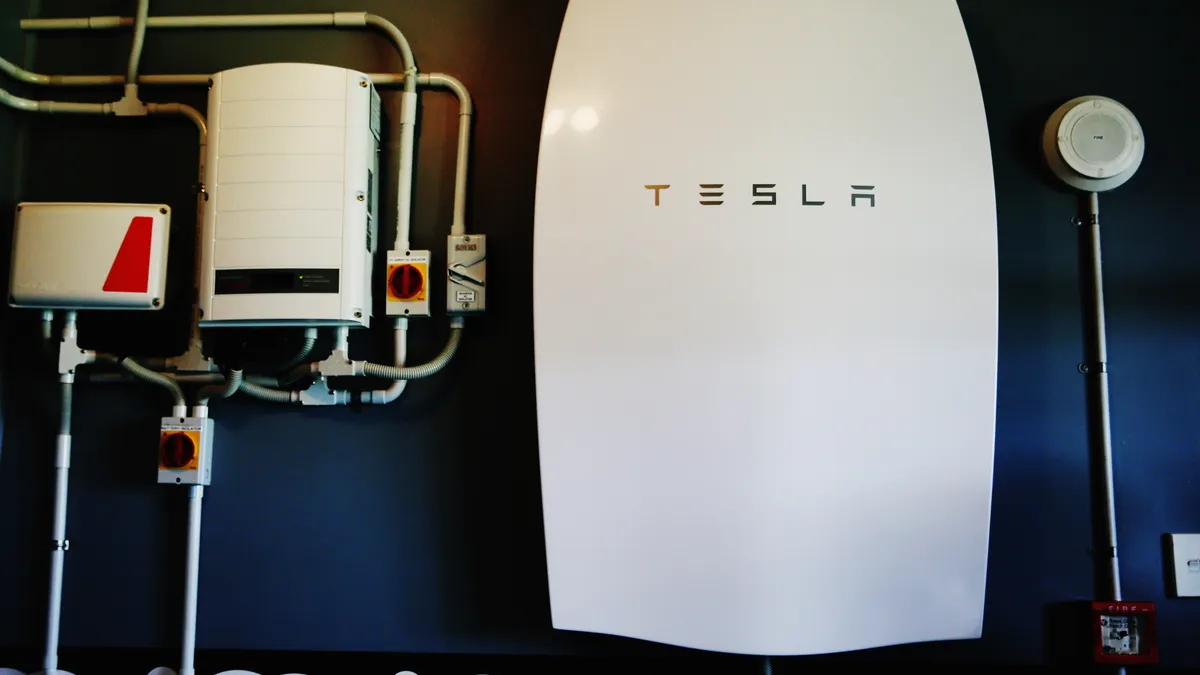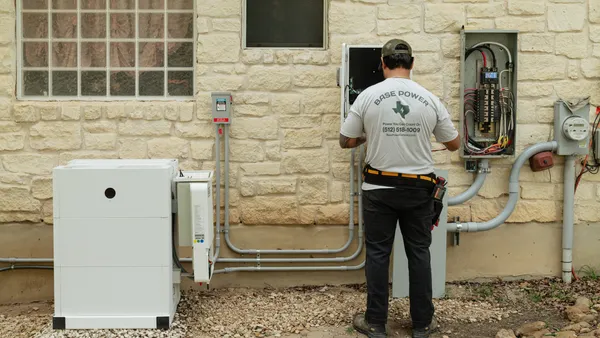Dive Brief:
- Tesla and Pacific Gas & Electric have launched a program to aggregate the storage in ratepayers’ Tesla Powerwalls to provide emergency power to California’s grid when intense heat drives up demand on the system this summer and the summer of 2023. Participating residential and other distributed battery owners will be paid $2 per kWh for exporting power to the system when supplies are crimped from 4 p.m.–9 p.m. between May 1 and October 31.
- Owners of one of Tesla’s 50,000 distributed storage systems in PG&E’s service area can take part in the Emergency Load Reduction Program, or ELRP. This program was approved by the California Public Utilities Commission last December to shore up the grid with 2-3 GW of new resources as well as negawatts – energy use reductions – to avoid blackouts during late summer afternoons and early evenings.
- The Tesla-PG&E project allows Powerwall owners to reserve storage capacity to ensure juice in their battery remains after responding to a grid warning so they can power their home as needed or preferred. They also can opt out of a grid warning event.
Dive Insight:
“Become a part of the largest distributed battery in the world and help keep California’s energy clean and reliable,” Tesla said last week in announcing its deal with PG&E to use the combined output of many customer Powerwalls to create a virtual power plant, or VPP.
“The program is an opportunity to show how customers can make a difference, replace dirty peaker plants and provide a climate-wise solution,” said Kate Unger, a senior policy advisor at the California Solar and Storage Association. But having the program in place for only two to three years is inadequate because a longer program is needed to increase participation, she added.
What is notable about this part of California’s ELRP program, created in response to Governor Gavin Newsom’s July 30, 2021, emergency summer supply directive, is that it allows for the first time compensation for exports, not just load curtailments, Unger said. That is generally not true of California policy frameworks that govern VPPs, including for resource adequacy need, according to Unger. “This is one thing about ELRP that is a step in the right direction,” she said.
Jin Noh, California Energy Storage Alliance policy director, said the storage industry “worked to get exports recognized and compensated in the ELRP to help with the summer capacity tightness.”
California has the largest amount of distributed battery storage in the nation, hitting 900 MW from more than 75,000 systems installed, California Solar and Storage Association Policy Director Brad Heavner told Utility Dive June 27.
Between 900-1,350 MW of supply and demand-side resources during emergencies is to come from PG&E territory under the ELRP.
The Tesla-PG&E program is enhanced by fact that many of Tesla’s distributed batteries in PG&E’s territory are fueled by rooftop solar, according to the utility. Charging behind-the-meter batteries with solar power further reduces demand on and emissions from the grid.
PG&E ratepayers participating in the program are required to help the grid for at least 20 hours and at most 60 hours during annual summer grid alerts and emergencies called by the California Independent System Operator. Participants may get 24-hours’ notice or less. Under the program, battery owners can decide how much power to reserve for their own use.
“With Tesla’s participation in PG&E’s Emergency Load Reduction Program, we are further integrating behind-the-meter battery energy storage based VPPs on the largest scale yet,” said PG&E spokesperson Paul Doherty in an email.
Those enrolled in this ELRP program can not only opt out of an emergency a year but also turn off the VPP setting on their Powerwall to suspend their enrollment in the program but not terminate it.
Tesla said it will compensate program participants once a year or more frequently, starting in March.














